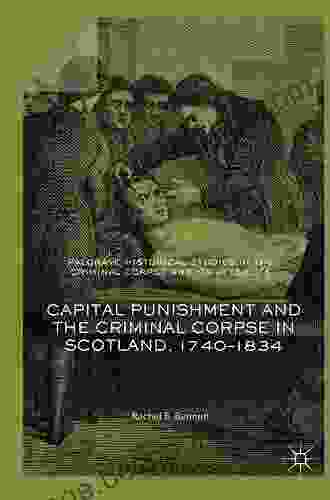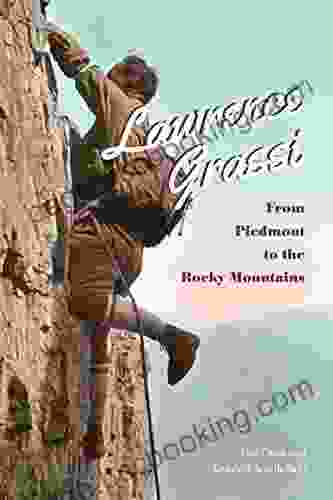Capital Punishment and the Criminal Corpse in Scotland, 1740-1834

Capital punishment has a long and complex history in Scotland, dating back to the Middle Ages. The Scottish legal system was heavily influenced by Roman law, which prescribed a wide range of punishments for crimes, including death. In the 18th century, capital punishment was the mandatory sentence for a number of crimes, including murder, treason, and robbery.
4 out of 5
| Language | : | English |
| File size | : | 1523 KB |
| Text-to-Speech | : | Enabled |
| Enhanced typesetting | : | Enabled |
| Word Wise | : | Enabled |
| Print length | : | 280 pages |
| Screen Reader | : | Supported |
The execution of criminals was a public spectacle, and it was often used as a means of deterrence. The bodies of executed criminals were often left on display after their death, as a warning to others. This practice was known as "gibbeting."
In the 19th century, attitudes towards capital punishment began to change. There was a growing movement for the abolition of the death penalty, and in 1834, capital punishment was abolished for most crimes in Scotland.
The History of Capital Punishment in Scotland
The first recorded execution in Scotland took place in the 12th century. The crime was murder, and the execution was carried out by beheading. Beheading was the most common method of execution in Scotland until the 16th century, when it was replaced by hanging.
Hanging remained the standard method of execution in Scotland until the 19th century. In 1834, the Scottish Parliament passed the Anatomy Act, which allowed the bodies of executed criminals to be used for medical research. This led to a decline in the practice of gibbeting, as the bodies of executed criminals were now being used for a more useful purpose.
In 1868, capital punishment was abolished for all crimes in Scotland. However, the death penalty was reinstated in 1931, for the crime of murder. In 1965, capital punishment was abolished again, and it has not been used in Scotland since then.
The Treatment of the Criminal Corpse in Scotland
The treatment of the criminal corpse in Scotland has varied over time. In the 18th century, the bodies of executed criminals were often left on display after their death, as a warning to others. This practice was known as "gibbeting." Gibbets were often erected in prominent locations, such as crossroads and market squares.
The bodies of executed criminals were sometimes also used for medical research. In the 19th century, the Scottish Parliament passed the Anatomy Act, which allowed the bodies of executed criminals to be used for medical research. This led to a decline in the practice of gibbeting, as the bodies of executed criminals were now being used for a more useful purpose.
In the 20th century, the bodies of executed criminals were buried in unmarked graves. This practice was intended to prevent the graves from becoming a place of pilgrimage for criminals.
The Abolition of Capital Punishment in Scotland
The movement for the abolition of capital punishment in Scotland began in the 18th century. There were a number of factors that contributed to the growth of this movement, including the growing humanitarianism of the Scottish people, the influence of the Enlightenment, and the increasing awareness of the fallibility of the criminal justice system.
In 1834, the Scottish Parliament passed the Anatomy Act, which allowed the bodies of executed criminals to be used for medical research. This led to a decline in the practice of gibbeting, as the bodies of executed criminals were now being used for a more useful purpose.
In 1868, capital punishment was abolished for all crimes in Scotland. However, the death penalty was reinstated in 1931, for the crime of murder. In 1965, capital punishment was abolished again, and it has not been used in Scotland since then.
Capital punishment has a long and complex history in Scotland. The Scottish legal system was heavily influenced by Roman law, which prescribed a wide range of punishments for crimes, including death. In the 18th century, capital punishment was the mandatory sentence for a number of crimes, including murder, treason, and robbery.
The execution of criminals was a public spectacle, and it was often used as a means of deterrence. The bodies of executed criminals were often left on display after their death, as a warning to others. This practice was known as "gibbeting."
In the 19th century, attitudes towards capital punishment began to change. There was a growing movement for the abolition of the death penalty, and in 1834, capital punishment was abolished for most crimes in Scotland.
In 1868, capital punishment was abolished for all crimes in Scotland. However, the death penalty was reinstated in 1931, for the crime of murder. In 1965, capital punishment was abolished again, and it has not been used in Scotland since then.
The abolition of capital punishment in Scotland was a major victory for the movement for human rights. It is a testament to the Scottish people's commitment to justice and compassion.
4 out of 5
| Language | : | English |
| File size | : | 1523 KB |
| Text-to-Speech | : | Enabled |
| Enhanced typesetting | : | Enabled |
| Word Wise | : | Enabled |
| Print length | : | 280 pages |
| Screen Reader | : | Supported |
Do you want to contribute by writing guest posts on this blog?
Please contact us and send us a resume of previous articles that you have written.
 Book
Book Novel
Novel Page
Page Chapter
Chapter Text
Text Story
Story Genre
Genre Reader
Reader Library
Library Paperback
Paperback E-book
E-book Magazine
Magazine Newspaper
Newspaper Paragraph
Paragraph Sentence
Sentence Bookmark
Bookmark Shelf
Shelf Glossary
Glossary Bibliography
Bibliography Foreword
Foreword Preface
Preface Synopsis
Synopsis Annotation
Annotation Footnote
Footnote Manuscript
Manuscript Scroll
Scroll Codex
Codex Tome
Tome Bestseller
Bestseller Classics
Classics Library card
Library card Narrative
Narrative Biography
Biography Autobiography
Autobiography Memoir
Memoir Reference
Reference Encyclopedia
Encyclopedia Seth Fishman
Seth Fishman Peggy Morales
Peggy Morales Pat Strubbe
Pat Strubbe Penguin Young Readers Licenses
Penguin Young Readers Licenses Swaminathan Sankaran
Swaminathan Sankaran Peter Limb
Peter Limb Norman Bridwell
Norman Bridwell Tim Muehlhoff
Tim Muehlhoff Peg Heron Heidel
Peg Heron Heidel Robyn O Brien
Robyn O Brien Rosemary Gladstar
Rosemary Gladstar Pastor Ahyh
Pastor Ahyh Oleg Atbashian
Oleg Atbashian Rif Winfield
Rif Winfield Sharae Moore
Sharae Moore Paul Fowler
Paul Fowler Nicole Weaver
Nicole Weaver Norman Ollestad
Norman Ollestad Paul W Ogden
Paul W Ogden Robert A Cook
Robert A Cook
Light bulbAdvertise smarter! Our strategic ad space ensures maximum exposure. Reserve your spot today!

 Dwight BlairUnleash Your Imagination: The Ultimate Guide to Crafting Epic Sci-Fi Tabletop...
Dwight BlairUnleash Your Imagination: The Ultimate Guide to Crafting Epic Sci-Fi Tabletop...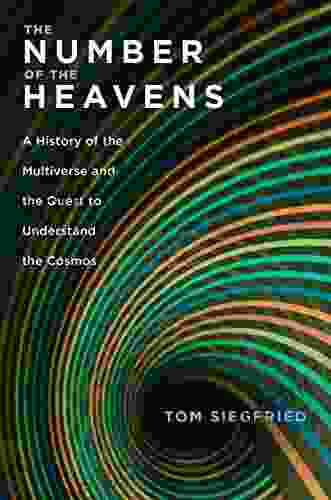
 Wayne CarterUnveiling the Intriguing History of the Multiverse: A Journey to Understand...
Wayne CarterUnveiling the Intriguing History of the Multiverse: A Journey to Understand...
 Richard WrightFate Did Not Let Me Go: A Journey of Survival and Healing after the Holocaust
Richard WrightFate Did Not Let Me Go: A Journey of Survival and Healing after the Holocaust Carter HayesFollow ·18.1k
Carter HayesFollow ·18.1k Jeff FosterFollow ·16.6k
Jeff FosterFollow ·16.6k Isaiah PowellFollow ·10.1k
Isaiah PowellFollow ·10.1k Simon MitchellFollow ·5.9k
Simon MitchellFollow ·5.9k Eddie BellFollow ·10.6k
Eddie BellFollow ·10.6k Edgar HayesFollow ·11.2k
Edgar HayesFollow ·11.2k Ivan TurgenevFollow ·5.3k
Ivan TurgenevFollow ·5.3k Warren BellFollow ·2.8k
Warren BellFollow ·2.8k
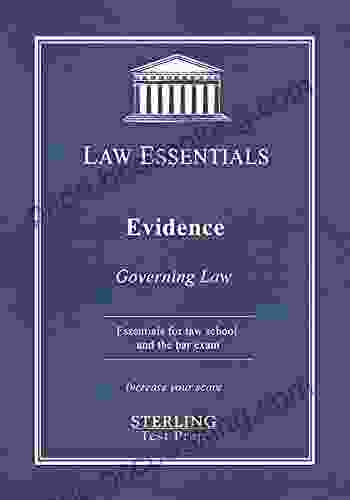
 Marvin Hayes
Marvin HayesGoverning Law for Law School and Bar Exam Prep: Your...
Unlock the Secrets of...
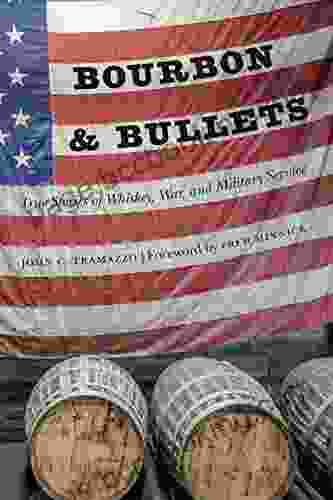
 Sidney Cox
Sidney CoxUnveiling the Epic Tales of Whiskey, War, and Military...
In the tapestry of history,...
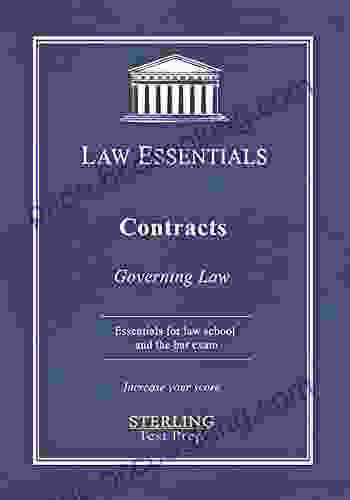
 Victor Turner
Victor TurnerGoverning Law for Law School and Bar Exam Prep: The...
What is Governing...

 Robert Browning
Robert BrowningSterling Test Prep MCAT General Chemistry Practice...
: Embark on Your MCAT General Chemistry...
4 out of 5
| Language | : | English |
| File size | : | 1523 KB |
| Text-to-Speech | : | Enabled |
| Enhanced typesetting | : | Enabled |
| Word Wise | : | Enabled |
| Print length | : | 280 pages |
| Screen Reader | : | Supported |


